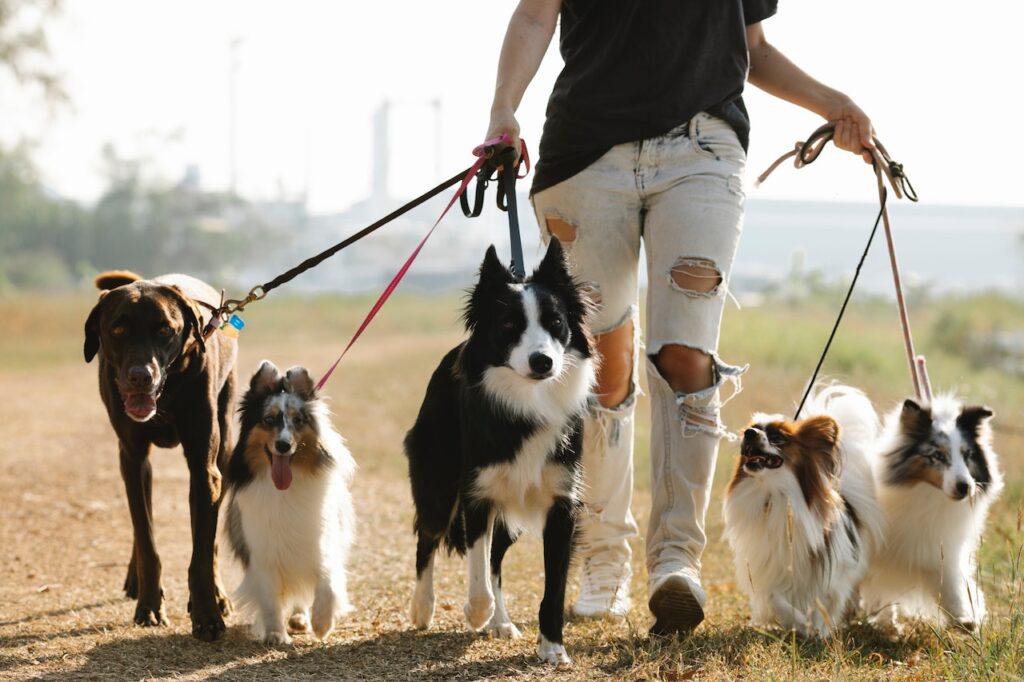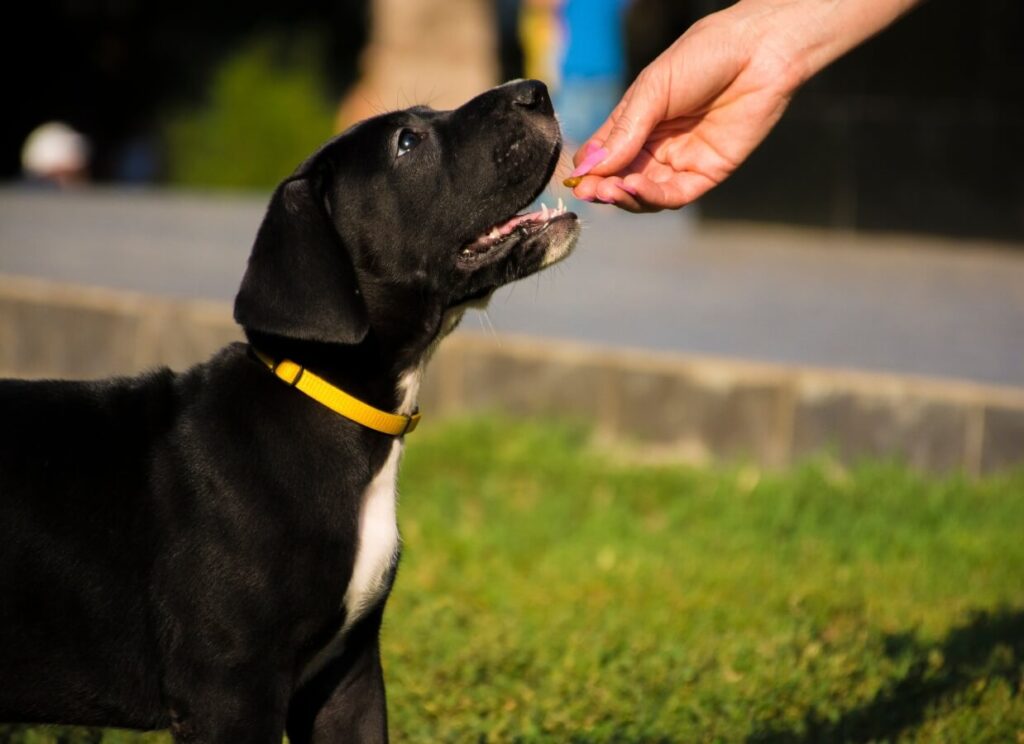Pet Fooled is a documentary that gained popularity in 2016 and has resurfaced on social media, drawing renewed attention. Pet parents worldwide are streaming it on platforms like Netflix and YouTube, prompting many to modify their pets’ diets based on the documentary’s content. Having never seen it, I watched Pet Fooled so you don’t have to.
Why did I do this? Numerous veterinarians and researchers have voiced their opinions on “Pet Fooled,” but the consensus is overwhelmingly negative. They argue that it is misleading and riddled with inaccuracies, leading pet owners down the wrong path when it comes to feeding their pets.
On the other side of the spectrum, many pet owners, natural pet stores, influencers, and a handful of fringe holistic practitioners praise and endorse the documentary.
I was curious to understand the reasons behind the hype surrounding Pet Fooled. If you choose to watch it with me, I highly recommend going into it with an open mind AND a healthy dose of skepticism.
Here is what I learned from watching Pet Fooled.
Note: This is a multi-part series! Additional articles in this series will be posted below.
Part One: “Biologically appropriate” feeding, bacteria & pathogens in raw food, and the influence of “big kibble” on veterinary schools (See Part One HERE)
Part Two: Pet food marketing, ingredients in pet food (including corn and by-products), manufacturing, AAFCO, and FDA regulations (See Part Two HERE)
Part Three: Pet food recalls, veterinary diets, and holistic pet food elitism (See Part Three HERE)

What is the Pet Fooled Documentary?
“Pet Fooled” is a documentary film released in 2016 that examines the commercial pet food industry and advocates for alternative feeding practices for pets.
The film raises concerns about the ingredients and nutritional quality of mass-produced pet foods and suggests that they may be harmful to pets’ health.
“Pet Fooled” includes discussions with holistic veterinarians and pet owners who provide their insights into the pet food industry and its impact on pet health. They advocate for alternative feeding methods for pets, and ask pet owners to “do more research”.
What Veterinarians are Featured in Pet Fooled?
- Dr. Karen Becker:
- Qualifications: Dr. Becker is a proactive and integrative wellness veterinarian with a Doctor of Veterinary Medicine (DVM) degree.
- Her passion lies primarily in wildlife rehabilitation.
- Background: She is known for her holistic approach to pet health and has authored several books on pet care and nutrition. In addition, she has courses, a community, and an online shop where pet parents can purchase content, supplements, and food.
- She is well known for her association with quack Dr. Mercola and controversial journalist Rodney Habib
- Dr. Barbara Royal:
- Qualifications: Dr. Royal is a veterinarian with a Doctor of Veterinary Medicine (DVM) degree.
- Background: She specializes in holistic veterinary medicine and is the founder and owner of The Royal Treatment Veterinary Center in Chicago.
- Dr. Barbara Royal has authored a book where she shares her holistic approach to pet care, offering insights and advice on nutrition, preventive medicine, and holistic healing for pets.
- Dr. Lisa Pierson:
- Qualifications: Dr. Pierson is a veterinarian who earned her Doctor of Veterinary Medicine (DVM) degree.
- Background: She is a strong advocate for raw feeding and specializes in feline nutrition.
- Dr. Pierson runs a popular website dedicated to feline nutrition education.
It’s important to note that all the veterinarians showcased in “Pet Fooled” adhere to the “Holistic” and “Integrative” pet care philosophy, a perspective criticized for its tendency to reject mainstream scientific practices, avoid evidence-based approaches, and represent a minority opinion within the veterinary community.
All three veterinarians who are interviewed in Pet Fooled also work as influencers, generating income through the sale of items such as food, supplements, online courses, memberships, and books. It’s crucial to recognize this aspect, as their viewpoints may be influenced by their financial interests.

My Approach to Watching and Debunking Pet Fooled
As a proponent of science and a staunch advocate for evidence-based veterinary practices, I anticipated watching Pet Fooled might be challenging. I decided that it was important for me to keep an open mind, as many people love this film.
I leashed up my muscular, athletic little Purina-fed dog, put the documentary on my headphones (podcast style), and started on the trail for an hour-long walk with Dr. Karen Becker in my ear.
This allowed me to digest the information without frantically scribbling notes. My feet pounded the pavement as I took in every bit of classical music and the words that were fed to me in the documentary.
Don’t worry, I later sat down to properly watch it, too. The visual aspect of Pet Fooled is part of its message, and I wanted to be prepared for it.
Pet Fooled presents controversial narratives and makes a lot of questionable claims to support their position that kibble is unsafe, unhealthy, and not nutritious.
Pet owners who wish to be fully educated about nutrition should continue reading below because I’m going to break this down and cite my sources. Dig in…

Raw Dogging Raw Dog Food
Author’s Note: This article is not meant to be a kibble vs. raw debate, but I did feel it important to address the claims made in Pet Fooled. As always, talk to your veterinarian and feed what works best for your pet and family.
In the film, Dr. Karen Becker is seen using bare hands to handle raw pet food from the company “Northwest Naturals” as she prepares meals for several dogs and cats in her home. A similar scene is repeated a few minutes later, when Dr. Barbara Royal is introduced to us while giving her excited, happy dog his dinner.
It’s long been proven that raw meat, including that used in raw dog food, can contain bacteria such as Salmonella, Escherichia coli (E. coli), and Listeria monocytogenes, which may cause illness in both dogs and humans.
Dr. Barbara Royal pulls a package of Darwin’s Raw Pet food out of a bag and says to her dog “Do you know why you don’t look 12 years old? Because your parents feed you EXCELLENT food…”
Once her dog is finished eating its Darwin raw food meal, Dr. Royal gets on the floor and lets her pet lick her face.
She says “Do I worry about them eating raw food and then licking me? No. I do not. [laughs]. Because the fact is, there aren’t any pathogens in that raw food. Because they’re careful with it.”
So there it is. The first blatantly misleading and false statement in Pet Fooled.
The truth is that Darwin’s Natural Pet Products has had a sordid history of recalls due to contamination with pathogens such as Salmonella and Listeria monocytogenes (this topic alone requires an entire blog post).
They have been in trouble with the FDA for refusing to recall contaminated products, too. 1
The food seen in the film being fed by Dr. Becker, Northwest Naturals, was recalled in 20182 because of Listeria monocytogenes.
Recalls for bacterial contamination in pet foods are not uncommon. Controlling pathogens requires exceptional quality control, especially for raw brands.
Dogs can sometimes handle these bacteria without showing symptoms, but they can still shed them in their feces, posing a risk of transmission to humans. 3
The vast majority of veterinarians express concerns about raw diets due to the potential for contamination, which can have detrimental effects on both pets and their owners. The AVMA (American Veterinary Medical Association) advises against feeding raw diets precisely because of these risks.4
Dr. Becker claims that the dog’s acidic stomach is there to neutralize bacteria. However, numerous reports and studies show that dogs fed contaminated food will shed those bacteria in their saliva and stool. Those bacteria are not, in fact, “neutralized” but rather, are alive and well.
One study found that human stomachs are more acidic than dog stomachs!
@erdvm MISINFO MONDAY : dogs and salmonella -dogs stomachs are acidic, but humans are more acidic. Humans can get salmonella, which tells us the pH of a stomach isn’t the whole picture -bacteria like salmonella have found ways to evade the acidic environment of the stomach, making gastric pH alone irrelevant -asymptomatic dogs can and do shed salmonella, meaning it’s not killed by the stomach -there is no evidence that raw fed dogs have any immunity to this. The case I saw was a raw fed dog and it did not survive. One health tells us we shouldn’t just focus on the pet, but the owner as well. Salmonella is infectious to humans and we should be stewarts of health!
♬ original sound – Emergency Veterinarian
Not even 10 minutes into the film, I already have so many questions. The laissez-faire approach to bacterial contamination, especially coming from veterinarians (who should be very averse to disease and pathogens because they know what it can do to the body) surprised me.
This doesn’t even touch on the subtle product placement. It could be interpreted as a clear endorsement for those companies, with both veterinarians and the producers likely receiving substantial compensation for featuring them in the film.
I did try to watch this with an open mind, so I moved on from the misleading nature of those scenes and continued my journey with “Pet Fooled”.

Biologically Appropriate Diets for Dogs
In the next section of the Pet Fooled, the topic of “biologically-appropriate” or “species-appropriate” diets is brought up.
Dr. Karen Becker is a wildlife rehabilitation veterinarian, known for her expertise in treating and caring for injured and orphaned wild animals.
Wild animals have very different dietary needs from domesticated animals. By its very nature, domestication changes animal’s gut microbiome and how they digest and utilize foods that are available to them.
Genome studies are showing that domestic dogs have adapted to a diet that includes starches. 5
In Pet Fooled, Dr. Becker claims that dogs “come from wolves and should eat a raw meat diet“, as if all of our pets were wild animals living in our homes.
I went digging for the science on this one. Exciting innovations in genome research have brought us a lot of new information about our pets’ ancestors, and researchers have found that domesticated pet dogs need a different diet than wolves. 6
The idea of a raw all-meat feast loaded with by-products (liver, bone, kidney) inspired by our dog’s wild ancestors seems nice until you consider that pet dogs live their lives indoors and don’t have to hunt and fight for their food every day.
Dr. Becker ultimately states that feeding pets a “non-biologically appropriate diet” (aka, kibble) as a type of “nutritional abuse.“
The implication that the majority of pet owners worldwide are “abusing their pets” by feeding them kibble is significant. It’s sensational, misleading, and disingenuous.
She explains that wolves and dogs share 99% of the same DNA. To put this into perspective, humans and chimps share 99% of the same DNA too, but you don’t see many humans consuming raw mice, raw monkeys, roots, bark, soil, and insects.
Furthermore, it’s worth noting that the majority of raw pet food diets do not include scavenged trash, rodents, beavers, squirrels, insects, or other dogs (wolves will eat their dead). This is important to acknowledge, especially considering the “biologically appropriate” principle often cited by advocates of raw feeding.
Domestication changes the gut and eating habits. Thanks to science, humans have benefitted from cooking and a sophisticated supply chain that offers us a wider variety of foods than ever before.
Raw vs. Kibble Nutritional Research
Dr. Becker suggests that the absence of research proving raw food to be the superior diet is due to “a lack of funding.” This deficiency in research is cited as one of the reasons why veterinarians refrain from recommending raw diets, alongside concerns about bacterial contamination risks.
She then goes on to mention that kibble companies have “not produced research proving that kibble is nutritious and healthful“, but they have.
Purina, Hill’s, and Royal Canin have poured millions of dollars into dedicated research not just for nutrition, but veterinary science as well.
Purina sells one of the only foods on the market (Dog Chow) backed by a lifetime feeding study, and this is just one of thousands of studies done on pets and their nutritional needs.
Effects of diet restriction on life span and age-related changes in dogs – AVMA Publications.7
One raw pet food company, Instinct, is aiming to address this by putting funds towards researching raw diets. This is a promising move in the right direction, away from speculation and anecdotes, but far from robust.

Do Major Kibble Companies Influence Veterinary Classes?
Pet Fooled boldly states that big kibble manufacturers have a significant presence in veterinary schools, influencing the curriculum and shaping students’ perceptions of pet nutrition.
The narrator goes on to mention that there is a lack of education on raw diets in veterinary schools, too. Of course there, is, there isn’t much (if any) legitimate research proving that raw is safe and nutritious.
Because Pet Fooled only shared one side of this discussion, I’m going to share the other.
While the extent of industry influence remains a subject of contention, transparency and critical evaluation of educational materials are essential to uphold the integrity of veterinary education.
Understanding pet nutrition necessitates a foundation in science and research, and with rare exceptions, it is the major kibble manufacturers that are actively engaged in these endeavors.
Numerous peer-reviewed publications by these companies have contributed a wealth of information, ranging from strategies for treating bladder stones to mitigating the risk of bone growth issues in puppies.
Isn’t that what we want our up-and-coming veterinarians to be learning about?
Advocates for raw feeding could occupy a similar platform and impart peer-reviewed research and knowledge to veterinary schools; however, they choose not to.
Throwing stones at veterinary schools, practicing veterinarians, and major kibble companies without constructive contributions does little to support their argument.
Here is a great video from a veterinarian about this topic:
@erdvm I was tagged in this video, and as always I’ll hide the face/account. This is a fairly typical string of half truths and full out misinformation. They claim vets get one day of nutrition education, that it’s taught by certain pet food companies, and that we’re all owned by a corporate entity. Nutrition is more than a class – it’s the fifth vital sign. To say that nutrition isn’t a part of EVERY class shows a misunderstanding of both nutrition AND vet school education. A simple search will show most curriculums have a semester of nutrition, and those that don’t supplement it through other classes and clinics. It’s always so interesting that these people claim vets are somehow bought and sold by these companies, yet don’t extend the same blame to their discount codes or owning an actual food store. They directly profit off their misinformation, but vets are seen as the bad guy. I’m sure you’re tired of hearing me debunk these myths but they just don’t go away. They find some new way to spin the tired old lie. Why? They have no science or studies to back up their point of view, so they have to attack veterinarians and discredit us.
♬ original sound – Emergency Veterinarian
Controversial Claims Made in Pet Fooled
This concludes part one of my series on the Pet Fooled Documentary!
I’ve summarized the key claims from part one below:
- Raw feeding is inherently safer and healthier than feeding kibble: While raw feeding advocates argue that it mimics a more natural diet for pets, there is insufficient scientific evidence to conclusively support the superiority of raw diets over commercial pet foods. Additionally, raw diets can pose risks such as bacterial contamination and nutritional imbalances if not carefully formulated and prepared.
- Veterinary education is biased by pet food companies: While it’s important to recognize potential conflicts of interest, suggesting that pet food companies universally bias veterinary education oversimplifies the complex relationships between academia, industry, and professional organizations. Veterinary curricula typically include a broad range of nutritional education, including discussions on different types of pet diets.
These claims are contentious because they oversimplify complex issues and lack robust scientific evidence to support them.
It’s essential for pet owners to critically evaluate information presented in documentaries like “Pet Fooled” and consult with qualified veterinary professionals before making significant changes to their pets’ diets.
Note: This is a multi-part series! Additional articles in this series will be posted below.
Part One: “Biologically appropriate” feeding, bacteria & pathogens in raw food, and the influence of “big kibble” on veterinary schools (See Part One HERE)
Part Two: Pet food marketing, ingredients in pet food (including corn and by-products), manufacturing, AAFCO, and FDA regulations (See Part Two HERE)
Part Three: Pet food recalls, veterinary diets, and holistic pet food elitism (See Part Three HERE)
Footnotes
- FDA Advisory to Pet Parents about Darwin’s Raw Pet Food
October, 2023 ↩︎ - FDA Recall Alert: Northwest Naturals Raw Food
February, 2018 ↩︎ - Merck Veterinary Manual
Salmonellosis in Animals
↩︎ - AVMA Policy on Raw Diets
↩︎ - Axelsson, E., Ratnakumar, A., Arendt, ML. et al. The genomic signature of dog domestication reveals adaptation to a starch-rich diet. Nature 495, 360–364 (2013). https://doi.org/10.1038/nature11837 ↩︎
- Diet Shaped Dog Domestication, Elizabeth Pennissi, 2013
“Genomic analysis reveals that dogs and humans walked similar evolutionary paths” ↩︎ - Effects of diet restriction on life span and age-related changes in dogs ↩︎



